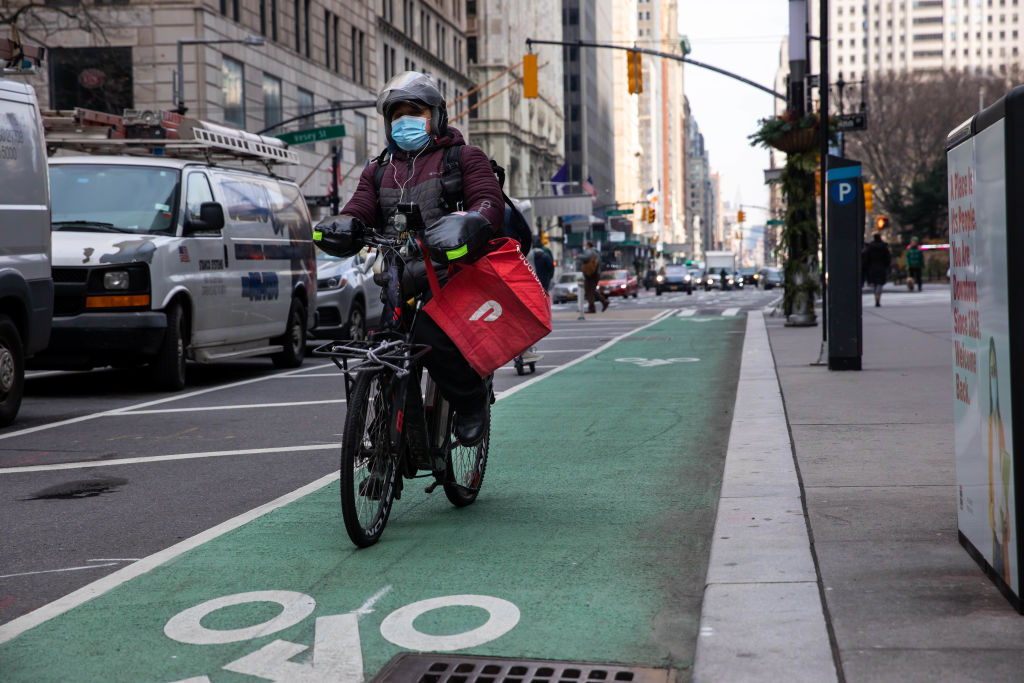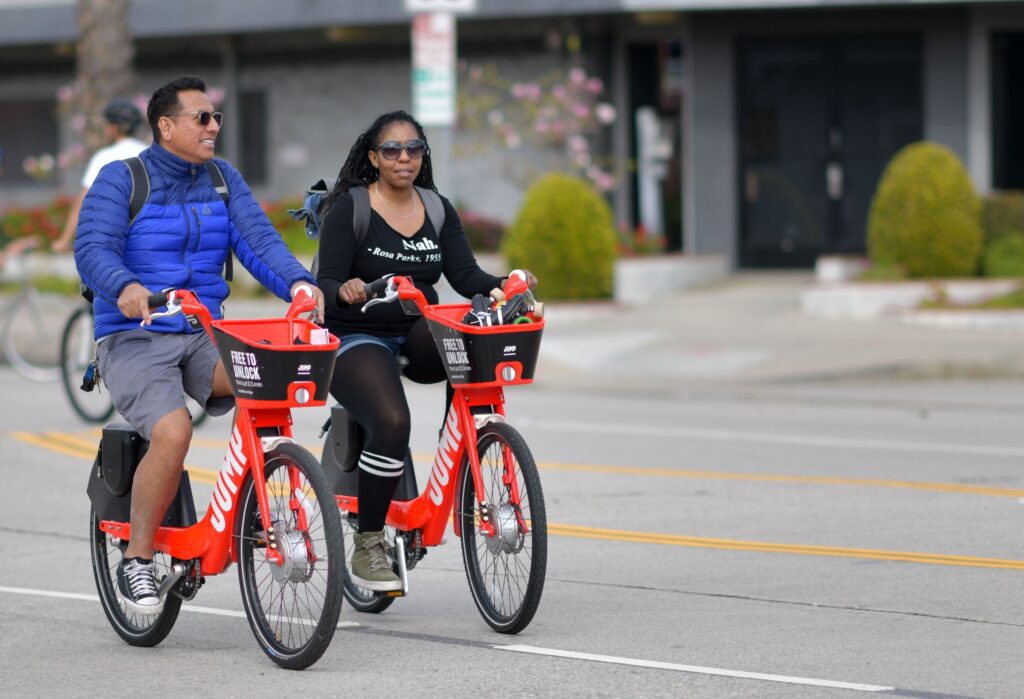Yes, e-bikes are typically allowed on sidewalks, but it varies depending on local regulations. E-bikes have gained significant popularity in recent years, offering a convenient and eco-friendly mode of transportation.
With their electric motor assist, e-bikes allow riders to effortlessly maneuver through city streets and suburban neighborhoods. However, the question of whether e-bikes can ride on sidewalks often arises. The answer to this question is not straightforward, as it depends on the specific laws and regulations of the jurisdiction in which you are riding.
While some cities allow e-bikes on sidewalks, others restrict them to bike lanes or roads. To stay on the right side of the law, it’s crucial to familiarize yourself with local regulations before taking your e-bike for a spin. We’ll delve deeper into the topic and explore the rules and considerations related to riding e-bikes on sidewalks.
Safety Concerns With E-bikes On Sidewalks
E-bikes are becoming increasingly popular as an alternative mode of transportation. However, allowing e-bikes on sidewalks poses several safety concerns, particularly for pedestrians. Firstly, e-bikes can reach high speeds, making it difficult for pedestrians to react quickly enough to avoid accidents. The maneuverability of e-bikes also presents a challenge, as riders may struggle to navigate narrow sidewalks, especially in crowded areas.
Furthermore, e-bikes tend to be quieter than traditional bicycles, which can make it harder for pedestrians to hear them approaching. This lack of audibility increases the risk of collisions, particularly for visually impaired individuals who heavily rely on sound cues.
While e-bikes offer a convenient and eco-friendly commuting option, they may not be suitable for sidewalk use due to the increased risk of accidents for pedestrians. More research and regulations are needed to address the safety concerns associated with e-bikes on sidewalks.
Legal Considerations For E-bikes On Sidewalks
There are legal considerations to keep in mind when it comes to riding e-bikeshttps://crazycyclists.com/best-gotrax-e-bike/
on sidewalks. Local regulations and restrictions vary depending on the area you are in. It is important to familiarize yourself with the laws and regulations specific to your location. Some areas may allow certain types of e-bikes on sidewalks, while others may have stricter rules.
Violating these regulations can result in potential fines and penalties. It is essential to be aware of the variations for different types of e-bikes, as each type may be subject to different rules. To avoid any legal issues, research and understand the local regulations and restrictions governing e-bike use on sidewalks in your area.
Alternatives To Sidewalk Riding For E-bike Users
For e-bike users who are unsure of whether they can ride on sidewalks, there are several alternatives to consider:
- Utilizing bike lanes and cycling infrastructure: Many cities have dedicated bike lanes and cycling infrastructure that provide a safe and designated space for e-bike riders. By utilizing these facilities, riders can avoid the uncertainty and potential hazards of riding on sidewalks.
- Riding in designated shared paths: In addition to bike lanes, some areas may also have designated shared paths specifically designed for various types of non-motorized transportation, including e-bikes. These paths generally offer a smoother riding surface and fewer obstacles than sidewalks.
- Understanding local road rules and signage: One of the most important things e-bike users can do is familiarize themselves with the local road rules and signage in their area. This information will help determine where e-bikes are allowed to ride and ensure compliance with all applicable laws.
By considering these alternatives and being aware of local regulations, e-bike users can confidently navigate their paths while ensuring the safety of themselves and others.
The Impact Of E-bikes On Pedestrians
E-bikes, also known as electric bicycles, have gained popularity in recent years as a convenient and eco-friendly mode of transportation. They differ from traditional bicycles in that they are equipped with a small electric motor that assists while pedaling. This technology allows riders to travel at higher speeds and tackle difficult terrains with ease. However, these features also raise concerns when it comes to sharing sidewalks with pedestrians.
One of the main challenges posed by e-bikes is their increased speed compared to traditional bicycles. While pedestrians are accustomed to sharing sidewalks with regular cyclists moving at a moderate pace, e-bikes can reach higher speeds, potentially increasing the risk of accidents. This puts vulnerable pedestrians, such as the elderly or young children, at greater risk of collisions or injuries. Additionally, the quietness of e-bikes, due to their electric motors, may make it more difficult for pedestrians to anticipate their presence, further exacerbating safety concerns.
When considering the use of e-bikes on sidewalks, striking a balance between mobility and safety becomes essential. Some regions have implemented regulations that prohibit e-bikes from using sidewalks, requiring them to share the road with motor vehicles. This approach aims to prioritize pedestrian safety while still catering to the convenience and accessibility provided by e-bikes. Education and awareness campaigns can also play a crucial role in ensuring that both e-bike riders and pedestrians understand their respective responsibilities and share public spaces harmoniously. By addressing the concerns associated with e-bikes, a balance can be achieved in promoting sustainable transportation without compromising pedestrian safety.
Designing E-bikes For Sidewalk Safety
Incorporating safety features and technology is crucial when it comes to designing e-bikes for sidewalk use. One of the main concerns is improving visibility for both riders and pedestrians. Implementing bold and bright colors, reflective materials, and LED lights can significantly enhance e-bike visibility, especially during low-light conditions. Additionally, integrating effective signaling systems, such as turn signals and brake lights, can help riders communicate their intentions to pedestrians.
Another important aspect is promoting responsible riding behavior. E-bikes should be equipped with speed limiters to ensure that riders do not exceed safe speeds on sidewalks. Implementing automatic speed reduction technology when approaching crowded areas can also increase safety. Educating riders about the importance of yielding to pedestrians, avoiding sudden maneuvers, and following traffic rules is crucial for responsible e-bike usage on sidewalks.
In conclusion, by incorporating safety features and promoting responsible riding behavior, e-bikes can be designed to prioritize the safety of pedestrians and riders alike on sidewalks.
Public Opinion On E-bike Usage On Sidewalks
Public opinion on the usage of e-bikes on sidewalks varies significantly. Perspectives from pedestrians and cyclists highlight both concerns and potential advantages.
Surveys and studies indicate that pedestrians often express safety concerns when sharing sidewalks with e-bikes. Their worries primarily revolve around the potential for accidents and collisions, especially due to e-bike riders’ higher speeds compared to traditional cyclists.
On the other hand, some cyclists argue that riding e-bikes on sidewalks can offer advantages in terms of easier maneuverability and avoiding traffic congestion. They emphasize that e-bikes can be a convenient mode of transportation, particularly for individuals with mobility limitations or when traveling short distances.
Exploring possible compromises and solutions is crucial in addressing this complex issue. Potential approaches include implementing clear and specific regulations regarding e-bike usage on sidewalks, creating designated lanes or paths for e-bikes to separate them from pedestrians, and increasing public awareness of shared space etiquette to foster mutual respect.
International Approaches To E-bike Sidewalk Regulations
International approaches to e-bike sidewalk regulations vary greatly, with contrasting policies and enforcement strategies across different countries. Lessons can be learned from these diverse approaches, and there is potential for the development of global best practices.
In some countries, e-bikes are allowed on sidewalks and are subject to the same rules and regulations as regular bicycles. This approach recognizes e-bikes as a form of non-motorized transport and encourages their use as a sustainable mode of transportation.
Other countries have stricter regulations, prohibiting e-bikes from sidewalks and requiring them to use designated bike lanes or roadways. This approach aims to ensure pedestrian safety and reduce conflicts between e-bike riders and pedestrians.
Enforcement strategies also differ, with some countries relying on education and awareness campaigns, while others focus on strict enforcement and penalties for non-compliance. It is essential to strike a balance between promoting e-bike use and ensuring safety for all road users.
By studying and analyzing different international approaches, policymakers can identify successful strategies and develop comprehensive regulations that accommodate the needs of e-bike riders while prioritizing pedestrian safety.
Collaborative Efforts To Address E-bike Sidewalk Usage
- Evaluation of existing regulations to accommodate e-bikes on sidewalks
- Collaboration with local authorities and government bodies to determine appropriate usage
- Educating e-bike riders about sidewalk etiquette and responsible riding
- Organizing community forums and workshops to address concerns and gather feedback
- Creation of informational materials and guidelines for e-bike riders
- Partnering with local media outlets and influencers to promote safe riding practices
Future Considerations For E-bike Sidewalk Usage
Electronic bikes, or e-bikes, have gained popularity as a convenient and eco-friendly mode of transportation. However, their integration into urban planning requires careful thought and consideration. One key aspect to address is the usage of e-bikes on sidewalks. While there are differing opinions on whether e-bikes should be allowed on sidewalks, it is important to analyze the potential benefits and drawbacks.
Potential integration with public transportation systems: E-bikes have the potential to complement existing public transportation networks, providing first- and last-mile connectivity. By allowing e-bikes on sidewalks, commuters can easily transition from public transport stops to their final destinations, reducing traffic congestion and improving accessibility.
Technological advancements and innovations: Continuous technological advancements in e-bike manufacturing can address concerns related to safety and speed. Implementing speed limiters or introducing e-bikes with enhanced braking systems can help ensure pedestrian safety on sidewalks. Additionally, technological advancements can lead to quieter e-bikes, minimizing noise pollution in pedestrian-intensive areas.
Incorporating e-bikes into urban planning: City administrations should consider designated bike lanes and infrastructure that cater to e-bikes, separating them from pedestrians and traditional cyclists. This approach can minimize conflicts and provide a safer environment for all road users. Additionally, promoting education and awareness campaigns for e-bike riders can help foster a culture of responsible and respectful usage.

Credit: time.com
Frequently Asked Questions For Can E-bikes Go On Sidewalks
Can E-bikes Be Ridden On Sidewalks?
E-bikes are typically not allowed on sidewalks as they are considered motorized vehicles. However, rules and regulations for e-bike usage can vary by location, so it’s important to check your local laws. In general, it’s safer to ride e-bikes on designated bike lanes or on the road to avoid potential accidents or conflicts with pedestrians.
Are Electric Bikes Allowed On Pedestrian Paths?
In most places, electric bikes are not allowed on pedestrian paths. Pedestrian paths are specifically designed for pedestrians and allowing e-bikes on these paths can pose risks to walkers and joggers. It’s best to stick to designated bike lanes, roads, or mixed-use paths where e-bikes are permitted.
Can Electric Bicycles Use Bike Lanes?
Yes, electric bicycles are typically allowed to use bike lanes. Bike lanes are designed to provide a safe space for cyclists, including e-bike riders. However, it’s important to ride responsibly, obey traffic rules, and be aware of other cyclists using the bike lane to ensure everyone’s safety and smooth traffic flow.
Conclusion
To sum up, it’s crucial to consider local regulations and bike laws before riding an e-bike on sidewalks. While some areas allow e-bikes on sidewalks, others prohibit it due to safety concerns. Always prioritize pedestrian safety and exercise caution when sharing space on sidewalks.
Additionally, exploring alternative options, such as bike lanes or designated e-bike paths, can provide a safer and more enjoyable riding experience. Stay informed, respect local rules, and enjoy your e-bike responsibly.



